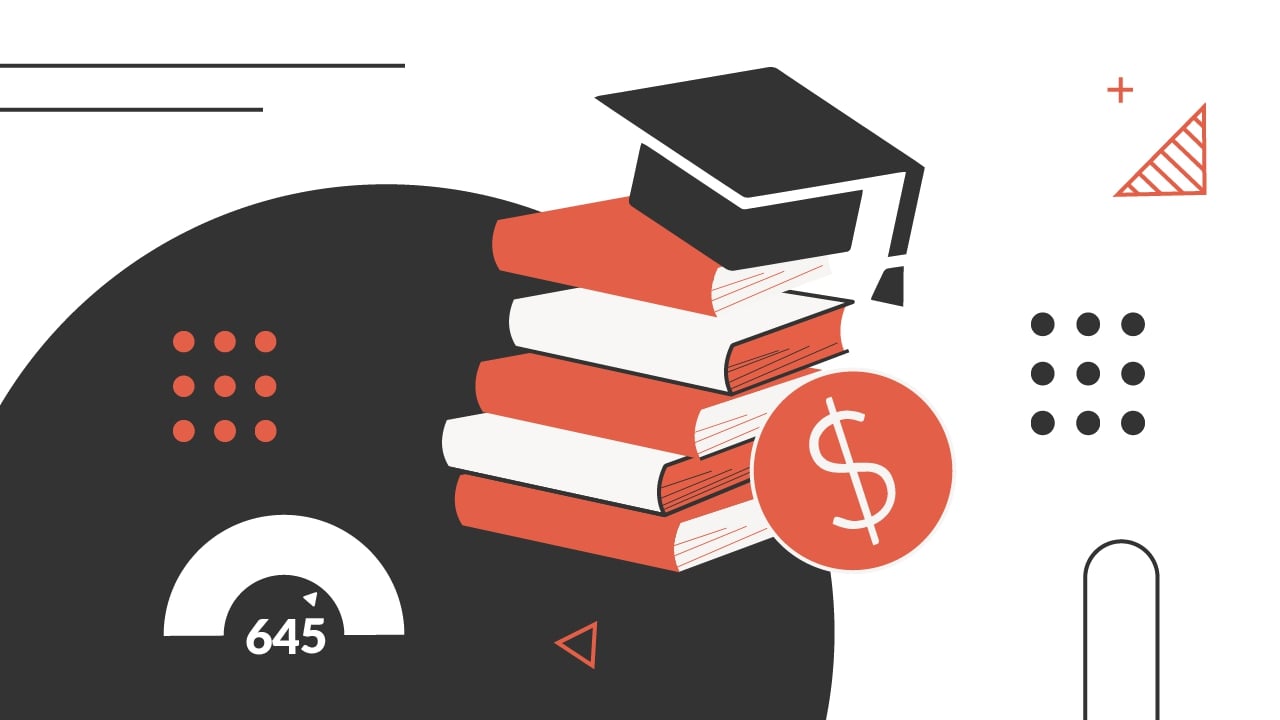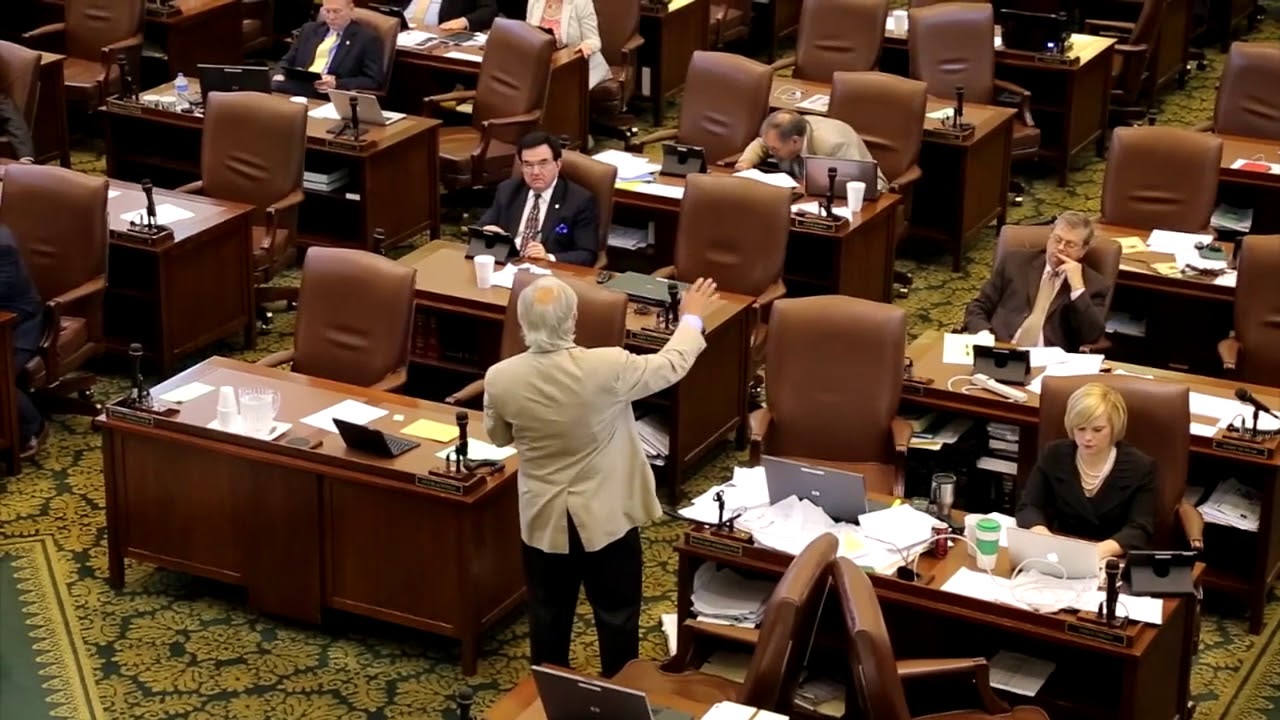Home>Finance>How To Get Back Into School With Defaulted Student Loans


Finance
How To Get Back Into School With Defaulted Student Loans
Published: January 20, 2024
Discover how to overcome defaulted student loans and get back into school. Learn valuable finance strategies to continue your education and improve your financial future.
(Many of the links in this article redirect to a specific reviewed product. Your purchase of these products through affiliate links helps to generate commission for LiveWell, at no extra cost. Learn more)
Table of Contents
- Introduction
- Understanding Defaulted Student Loans
- Impact of Defaulting on Education
- Steps to Get Back Into School
- Step 1: Assess Your Loan Situation
- Step 2: Determine Your Repayment Options
- Step 3: Apply for Loan Rehabilitation
- Step 4: Explore Loan Consolidation
- Step 5: Seek Financial Aid and Scholarships
- Step 6: Create a Budget
- Step 7: Communicate with School and Lenders
- Step 8: Develop a Student Loan Repayment Plan
- Conclusion
Introduction
Returning to school can be an exciting opportunity for personal and professional growth. However, for individuals with defaulted student loans, this dream can seem out of reach. Defaulting on student loans can have severe consequences on your credit score and financial future, making it challenging to access further education.
But don’t lose hope just yet. There are steps you can take to get back into school, even with defaulted student loans. By understanding the implications of defaulting and taking proactive measures to address your loan situation, you can pave the way for a successful return to education.
This article aims to guide you through the process of getting back into school despite having defaulted student loans. We’ll discuss the impact of defaulting on education, as well as the steps you can take to overcome this hurdle. So, whether you’re looking to complete your degree or pursue further studies, read on to discover how you can make your educational dreams a reality.
Understanding Defaulted Student Loans
Before diving into the steps of getting back into school with defaulted student loans, it’s crucial to understand what it means for a loan to be in default. A student loan is considered in default when the borrower fails to make payments for a specified period, usually around 270 days for federal student loans.
When a student loan goes into default, several negative consequences can arise. Firstly, your credit score takes a significant hit, making it difficult to secure future loans or credit cards. This can have long-term implications on your financial stability and ability to pursue education or other significant life goals.
Additionally, defaulting on student loans enables the loan servicer to take legal action to recover the debt. This can include wage garnishment, where a portion of your paycheck is withheld to repay the loan, or even the seizure of tax refunds or Social Security benefits.
Moreover, defaulted student loans can restrict access to federal financial aid programs, making it challenging to pursue further education. This barrier can be particularly disheartening for individuals who wish to return to school to advance their careers or explore new opportunities.
It’s essential to acknowledge that defaulting on student loans is a stressful and overwhelming situation. However, there are options available to help you get back on track and regain control of your educational future. In the following sections, we will explore the steps you can take to address defaulted student loans and successfully re-enroll in school.
Impact of Defaulting on Education
Defaulting on student loans can have a significant impact on your ability to pursue further education. It can limit your options and create barriers that make it challenging to achieve your educational goals. Here are some of the key ways in which defaulting on student loans can impact your education:
- Ineligibility for Federal Financial Aid: Defaulted student loans can disqualify you from receiving federal financial aid, including grants, scholarships, and loans. This can make it difficult to cover the costs of tuition, textbooks, and other educational expenses.
- Limited Access to Private Loans: Defaulted student loans can also make it harder to obtain private loans from financial institutions. Lenders may view you as a higher risk borrower and may require a cosigner or charge higher interest rates.
- Inability to Re-enroll or Transfer Credits: Some educational institutions may have policies in place that prevent students with defaulted loans from re-enrolling or transferring their credits. This can hinder your ability to continue your education or pursue different academic paths.
- Negative Impact on Credit Score and Employment: Defaulting on student loans can severely damage your credit score, making it harder to qualify for other forms of credit in the future. Additionally, some employers may conduct credit checks as part of the hiring process, and a low credit score could negatively impact your job prospects.
It’s clear that defaulting on student loans can have far-reaching consequences that extend beyond just the financial aspect. It can hinder your educational and professional prospects, creating barriers that can feel insurmountable. However, understanding your options and taking proactive steps can help you overcome these challenges and regain control of your education.
Steps to Get Back Into School
While defaulting on student loans can present obstacles to pursuing further education, there are steps you can take to get back on track and achieve your educational goals. By following these steps, you can address your loan situation, explore repayment options, and create a plan to successfully return to school:
- Assess Your Loan Situation: Start by reviewing your loan details, including the outstanding balance, interest rate, and loan servicer information. Understanding the specifics of your loans will help you determine the best course of action.
- Determine Your Repayment Options: Explore different repayment plans available for defaulted loans, such as income-driven repayment plans or extended repayment plans. These options can help you establish affordable monthly payments based on your income and financial situation.
- Apply for Loan Rehabilitation: Loan rehabilitation is a process that allows you to regain eligibility for federal financial aid by making a series of on-time payments on your defaulted loan. Successfully completing rehabilitation can remove the default status from your loan and restore your access to financial assistance.
- Explore Loan Consolidation: Consolidating your federal student loans can help simplify the repayment process by combining multiple loans into one new loan with a single monthly payment. This can make it easier to manage your loans and potentially lower your monthly payment.
- Seek Financial Aid and Scholarships: Research and apply for scholarships, grants, and other forms of financial aid that can help offset the costs of returning to school. Many institutions and organizations offer financial assistance specifically for individuals with defaulted student loans.
- Create a Budget: Develop a realistic budget that takes into account your income, expenses, and student loan payments. This will help you manage your finances effectively and ensure you can afford the costs associated with returning to school.
- Communicate with School and Lenders: Reach out to the school you plan to enroll in and your loan servicers to discuss your situation. They may have resources or programs available to help individuals with defaulted loans re-enroll or navigate the repayment process.
- Develop a Student Loan Repayment Plan: Work with your loan servicers to establish a repayment plan that aligns with your goals and financial capacity. This may involve negotiating lower interest rates, extended repayment terms, or other arrangements that make repayment more manageable.
By following these steps and taking proactive measures to address your defaulted student loans, you can overcome the barriers that may have prevented you from pursuing further education. Remember, it’s never too late to invest in your future and achieve your educational aspirations.
Step 1: Assess Your Loan Situation
Before taking any further action, it’s crucial to assess your loan situation and gain a clear understanding of the details surrounding your defaulted student loans. Here are the key steps to follow in this assessment:
- Gather Loan Documents: Collect all relevant loan documents, including promissory notes, loan agreements, and correspondence from your loan servicer. These documents will provide important information about the terms of your loans and the current status of your defaults.
- Review Outstanding Balance: Determine the total outstanding balance of your defaulted student loans. This will give you a clear picture of the amount you owe, which is crucial when exploring repayment options and negotiating with your loan servicer.
- Check Interest Rates: Take note of the interest rates associated with your loans. Understanding the interest rates will help you assess the long-term financial impact of your defaulted loans and evaluate potential repayment plans.
- Identify Loan Servicers: Identify the loan servicers responsible for managing your loans. Different loans may have different servicers, so it’s essential to know who to contact for each loan. This information is typically available on your loan documents or can be found by accessing your account online.
- Review Loan Repayment History: Examine your loan repayment history to determine the number of missed payments and the duration of the default. This information will be useful when discussing potential options for loan rehabilitation or consolidation.
- Understand Legal Consequences: Familiarize yourself with the legal consequences of defaulting on your student loans. This includes wage garnishment, tax refund seizure, and the potential impact on your credit score. Knowing the potential ramifications will help you make informed decisions and take appropriate actions.
By thoroughly assessing your loan situation, you will gain a comprehensive understanding of your defaulted student loans and lay the groundwork for navigating the next steps with confidence. This knowledge will empower you to seek viable solutions to address your loan defaults and move forward towards your educational goals.
Step 2: Determine Your Repayment Options
Once you have assessed your loan situation, the next crucial step is to determine the repayment options available for your defaulted student loans. Here are some common repayment options to consider:
- Income-Driven Repayment Plans: Income-driven repayment plans are designed to make your monthly loan payments more affordable based on your income and family size. Each plan has different eligibility requirements and formulas to calculate your monthly payment, such as the Revised Pay As You Earn (REPAYE), Pay As You Earn (PAYE), and Income-Based Repayment (IBR) plans. These plans can help you establish a manageable repayment structure while considering your current financial circumstances.
- Extended Repayment Plan: The extended repayment plan allows you to extend your repayment term beyond the standard 10-year period, reducing your monthly payments. This option can be helpful if you need more time to repay your loans but keep in mind that it may result in paying more interest over the long run.
- Loan Rehabilitation: Loan rehabilitation is a process that enables you to remove the default status from your student loans by making a series of on-time payments. This option requires you to work with your loan servicer to establish an affordable payment plan based on your income. Successful completion of the rehabilitation program can restore your eligibility for federal financial aid and improve your overall creditworthiness.
- Loan Consolidation: Consolidation combines multiple federal student loans into one new loan with a single monthly payment. This option can simplify repayment and potentially secure a fixed interest rate. However, it’s important to note that consolidation is typically only available for federal loans, not private loans.
- Talk to Your Loan Servicer: Reach out to your loan servicer to discuss other potential options for repayment. They may offer specific programs or repayment solutions for individuals with defaulted student loans that can help you establish more manageable payments.
When considering your repayment options, it’s essential to evaluate their long-term impact on your financial situation. Take into account factors such as monthly payment amounts, total interest paid over time, and the duration of the repayment plan. Consider seeking guidance from a financial advisor or loan counselor to help you make an informed decision based on your unique circumstances.
By determining the repayment options available to you, you can move forward with a plan that aligns with your financial capabilities and sets you on the path to successfully resolving your defaulted student loans and re-engaging with your educational aspirations.
Step 3: Apply for Loan Rehabilitation
If you are seeking to recover from defaulted student loans and regain eligibility for federal financial aid, the option of loan rehabilitation can be a viable solution. By successfully completing the rehabilitation process, you can remove the default status from your loans and restore your ability to receive federal assistance. Here’s what you need to know about applying for loan rehabilitation:
- Contact Your Loan Servicer: Reach out to your loan servicer to express your interest in applying for loan rehabilitation. They will provide you with the necessary information and guidance throughout the process.
- Determine Eligibility: Confirm whether your loans are eligible for rehabilitation. Generally, federal loans such as Direct Loans and Federal Family Education Loans (FFEL) are eligible. However, Parent PLUS Loans and Perkins Loans may have different requirements, so it’s important to check with your loan servicer.
- Establish a Payment Plan: Work with your loan servicer to establish an affordable payment plan based on your income. The monthly payment amount will be determined through the calculation of your discretionary income, typically around 15% of your income. This payment must be made on time for nine consecutive months to complete the rehabilitation process.
- Provide Required Documentation: Your loan servicer may ask you to submit additional documentation, such as proof of income, to support your application. Make sure to provide the necessary paperwork promptly to avoid delays in the rehabilitation process.
- Stay Committed to Payments: Once your payment plan is established, it is crucial to make consistent, on-time payments for nine consecutive months. Missing a payment during this period may result in restarting the rehabilitation process.
- Monitor Progress: Stay in touch with your loan servicer and keep track of your progress during the loan rehabilitation period. By staying informed, you can ensure that you are on track to successfully complete the process.
- Benefit from Rehabilitation: Once you have completed the nine-month payment plan, the default status on your loans will be removed, and you will regain eligibility for federal financial aid programs. Additionally, the record of default will be removed from your credit history, helping to improve your credit score and future financial prospects.
Remember, loan rehabilitation is a valuable opportunity to recover from defaulted student loans and regain control of your education. By successfully completing the rehabilitation process, you can pave the way for future academic pursuits and financial stability.
Step 4: Explore Loan Consolidation
If you have multiple federal student loans, consolidating them into a single loan through loan consolidation can simplify repayment and potentially improve your financial situation. Here’s what you need to know about exploring loan consolidation:
- Evaluate Eligibility: Determine if your loans are eligible for consolidation. Most federal student loans, including Direct Subsidized Loans, Direct Unsubsidized Loans, and Federal Perkins Loans, can be consolidated. However, private student loans cannot be included in the consolidation process.
- Understand the Pros and Cons: Consider the benefits and potential drawbacks of loan consolidation. Benefits include having a single monthly payment, the potential for a lower interest rate on the consolidated loan, and the ability to switch from variable to fixed interest rates. However, it’s important to note that consolidating loans may extend the repayment term, resulting in higher interest payments over time.
- Gather Loan Information: Collect all relevant loan information, including the types of loans, outstanding balances, and interest rates. This will help you determine the total amount to be consolidated and assist in comparing repayment options.
- Research Loan Consolidation Options: Explore different loan consolidation programs, such as the Federal Direct Consolidation Loan program. Review the terms and conditions, repayment plans, and any associated fees or benefits offered by each program.
- Contact Loan Servicer: Reach out to your loan servicer to initiate the loan consolidation process. They will guide you through the necessary steps and provide you with the required forms and documentation.
- Complete Application: Fill out the loan consolidation application accurately and provide the required information. Be sure to review the application thoroughly before submitting to avoid any errors that could delay the process.
- Review Consolidation Terms: Once your consolidation application is approved, carefully review the new loan terms and repayment options. Understand the interest rate, monthly payment amount, and duration of the repayment period.
- Continue Making Payments: It’s important to continue making regular loan payments until the consolidation process is finalized. This ensures that your loans remain in good standing during the transition.
Loan consolidation can help simplify your loan repayment process, making it easier to manage your debt. However, it’s essential to carefully consider the terms and potential impact of consolidation on your overall financial situation before proceeding. Consulting with a financial advisor or loan counselor can provide valuable guidance in making an informed decision.
By exploring loan consolidation, you can potentially lower your monthly payments, streamline your debt, and move closer to regaining control over your student loans while preparing for your educational journey.
Step 5: Seek Financial Aid and Scholarships
Returning to school with defaulted student loans doesn’t mean you have to shoulder the financial burden on your own. There are various financial aid and scholarship opportunities available that can help alleviate some of the costs. Here’s how you can seek financial aid and scholarships:
- Complete the FAFSA: Start by completing the Free Application for Federal Student Aid (FAFSA). The FAFSA is a crucial step to determine your eligibility for federal financial aid programs, including grants, work-study, and loans.
- Research Institutional Aid: Explore financial aid options offered directly by the institution you plan to attend. Many colleges and universities have their own scholarships, grants, and programs specifically designed for students facing financial challenges.
- Search for External Scholarships: Look for external scholarships that cater to your specific field of study, background, or personal circumstances. Websites such as Fastweb, Scholarships.com, and College Board’s Scholarship Search offer resources and databases to discover scholarships that match your profile.
- Reach out to Professional Organizations: Investigate professional organizations or associations related to your field of interest. These organizations often offer scholarships or grants to support aspiring students and professionals.
- Check with Local Organizations and Foundations: Explore scholarships and grants provided by local businesses, community organizations, and foundations in your area. These organizations often have targeted funding opportunities for students pursuing higher education.
- Pay Attention to Deadlines: Be diligent about noting scholarship application deadlines and ensure you submit your applications on time. Missing deadlines can result in missed opportunities for funding.
- Write a Compelling Personal Statement: For scholarships that require essays or personal statements, take the time to craft a compelling narrative that highlights your passion, goals, and perseverance. Include details about your experiences, challenges, and growth, emphasizing how further education will positively impact your future.
- Apply for Multiple Scholarships: Cast a wide net and apply for as many scholarships as possible. The more applications you submit, the greater your chances of securing financial support.
- Stay Persistent: Remember that receiving scholarships can be a competitive process, and it may take time to secure funding. Continue searching for opportunities and persistently apply to improve your chances of success.
By actively seeking financial aid and scholarships, you can significantly reduce the financial burden of returning to school with defaulted student loans. Be proactive, thorough, and persistent in your search, and take advantage of the various opportunities available to support your educational journey.
Step 6: Create a Budget
Creating a budget is an essential step in managing your finances effectively, especially when returning to school with defaulted student loans. By establishing a budget, you can gain a clear understanding of your income, expenses, and debt obligations. Here’s how to create a budget:
- Calculate Your Income: Determine your monthly income from all sources, including wages, scholarships, grants, and any other financial assistance.
- List Your Expenses: Make a comprehensive list of your monthly expenses, including tuition, books, rent, utilities, transportation, groceries, and other essential items. Also, consider discretionary expenses, such as entertainment and dining out.
- Prioritize Essential Expenses: Identify your essential expenses, such as housing, utilities, and food. These should be paid first to ensure your basic needs are met.
- Allocate Funds for Loan Payments: Dedicate a portion of your monthly income specifically for loan payments. Ensure that this amount aligns with your repayment plan and doesn’t strain your overall budget.
- Reduce Non-Essential Expenses: Identify areas where you can cut back on discretionary spending. Consider reducing entertainment expenses, eating out less frequently, or finding cost-effective alternatives for certain items.
- Explore Cost-Saving Measures: Seek opportunities to save money, such as renting textbooks instead of purchasing them, utilizing public transportation instead of owning a car, or living with roommates to share housing costs.
- Set Realistic Savings Goals: Determine how much you want to save each month, whether it’s for emergencies, future loan repayments, or other financial goals. Every small amount saved can contribute to your financial stability.
- Track and Review: Regularly monitor your expenses and compare them to your budget. Make adjustments as necessary to ensure you stay on track and have enough funds to cover your obligations.
- Seek Financial Guidance: If you find it challenging to create a budget or manage your finances, consider reaching out to a financial advisor or counselor who can provide guidance and offer insights specific to your situation.
Creating a budget allows you to take control of your financial situation and make informed decisions about how to allocate your resources. It helps you prioritize your expenses, manage loan payments effectively, and ensure that you have the necessary funds to cover your educational and living costs while living within your means.
Remember, a well-planned budget is a powerful tool that can help you navigate your educational journey while minimizing financial stress and maximizing your financial well-being.
Step 7: Communicate with School and Lenders
Open and effective communication with both your school and loan servicers is crucial when returning to school with defaulted student loans. It allows you to address any concerns, explore available resources, and navigate the path towards resolving your loan defaults. Here’s how to effectively communicate with your school and lenders:
- Contact the Financial Aid Office: Reach out to the financial aid office at your chosen school to discuss your situation. Explain your desire to return to school and inquire about any financial aid options or programs specifically designed for students with defaulted loans.
- Explain Your Circumstances: Clearly communicate your history of defaulted student loans to your school. Provide any relevant documentation or proof of your efforts to resolve the defaults. This will help them understand your situation better and potentially assist you with available resources.
- Discuss Enrollment Options: Inquire about your eligibility to enroll in your desired program with defaulted student loans. The school may have specific policies regarding academic reinstatement for individuals with outstanding loan defaults. Understanding these policies will help you plan your educational path accordingly.
- Explore Financial Aid Programs: Ask the financial aid office about any special financial aid programs or scholarships that might be available for students with defaulted loans. They may be aware of specific resources or alternative funding sources that can help support your education.
- Reach out to Loan Servicers: Establish regular communication with your loan servicers to stay updated on your repayment options, loan rehabilitation progress, or any other outstanding loan concerns. Inform them of your intent to return to school and inquire about any available assistance or repayment programs.
- Seek Loan Rehabilitation Support: Consult with your loan servicers to understand the impact of returning to school on your loan rehabilitation progress. They can advise you on how your enrollment may affect your repayment plan and guide you through the necessary steps to manage your loans while pursuing your education.
- Update Contact Information: Ensure that both your school and loan servicers have your current and accurate contact information. This allows them to reach out to you with important updates or changes in your loan status. Regularly check your emails and mail for any communications from them.
- Stay Informed: Continuously educate yourself about your student loan rights, responsibilities, and available resources. Familiarize yourself with the terms of your loans and any changes in legislation that may impact your repayment options or loan forgiveness programs.
By maintaining open lines of communication, you can stay informed about the resources and support available to you as you work towards resolving your defaulted student loans and pursuing your education. Take advantage of the guidance and assistance provided by your school and loan servicers, as they are there to help you navigate the complexities of student loan repayment.
Step 8: Develop a Student Loan Repayment Plan
Developing a well-structured student loan repayment plan is crucial when returning to school with defaulted loans. It allows you to effectively manage your debt while pursuing your educational goals. Here are the key steps to develop a student loan repayment plan:
- Gather Loan Information: Collect all relevant loan information, including loan types, outstanding balances, and interest rates. This information will serve as the foundation for creating your repayment plan.
- Review Repayment Options: Evaluate the various repayment options available for your defaulted student loans, such as income-driven repayment plans, extended repayment plans, or loan consolidation. Research the pros and cons of each option and consider their long-term impact on your financial situation.
- Calculate Monthly Payments: Use online loan repayment calculators or consult with your loan servicer to estimate what your monthly payments would be under different repayment plans. Consider your income, expenses, and other financial obligations to determine a manageable payment amount.
- Explore Loan Forgiveness Programs: Research loan forgiveness programs that may be applicable to your field of study or career path. For example, programs such as Public Service Loan Forgiveness (PSLF) can provide debt relief after a certain number of qualifying payments if you work in public service.
- Consider Accelerated Repayment: If financially feasible, you may choose to accelerate your loan repayment by making larger payments or paying more than the minimum monthly requirement. This can help you pay off your loans faster and save on interest over time.
- Set Financial Goals: Define your financial goals and timelines. Determine whether you want to pay off your loans within a specific period or if you prioritize paying them down while still pursuing your education.
- Create a Timeline: Develop a timeline for achieving your repayment goals. Break down your loan repayment into manageable milestones and set target dates for reaching them.
- Monitor Your Progress: Regularly review your progress and make adjustments as necessary. Stay engaged with your loan servicers to ensure that your payments are being properly applied and to address any issues that may arise.
- Seek Professional Advice: If you find it challenging to devise a repayment plan or need expert guidance, consider consulting with a financial advisor or loan counselor who specializes in student loans. They can provide personalized advice based on your unique circumstances.
A well-developed student loan repayment plan is crucial for managing your debt effectively and achieving your educational goals. It provides a roadmap for staying on track with your finances while pursuing further education, ensuring that your defaulted loans are properly addressed and manageable throughout your academic journey.
Remember, staying committed to your repayment plan, regularly reviewing your progress, and seeking professional advice when needed can help you successfully navigate the repayment process and work towards a debt-free future.
Conclusion
Returning to school with defaulted student loans may seem like an insurmountable challenge, but with the right approach and determination, you can overcome this hurdle and pursue your educational aspirations. By following the steps outlined in this guide, you can take control of your loan situation and pave the way for a successful return to education.
Understanding the implications of defaulted student loans on your credit score and educational prospects is a crucial starting point. It’s essential to assess your loan situation, explore repayment options, and consider loan rehabilitation or consolidation to address your defaults.
Seeking financial aid and scholarships, creating a budget, and communicating effectively with your school and loan servicers are vital components of your journey. Take advantage of the resources available to you, such as federal financial aid programs, institutional scholarships, and external funding opportunities, to ease the financial burden of returning to school.
Developing a student loan repayment plan tailored to your financial situation and goals will help you navigate through your debt obligations. Whether through income-driven repayment plans, loan consolidation, or accelerated repayment strategies, finding a plan that works for you is crucial in managing your loans effectively.
Finally, stay committed, be proactive, and seek guidance from experts when needed. Remember that it’s never too late to invest in your education and future. By taking the necessary steps and addressing your defaulted student loans, you can open doors to new opportunities and achieve your academic dreams.
So, take the first step today and embark on your journey towards educational advancement. With perseverance and a strategic approach, you can overcome the challenges posed by defaulted student loans and create a brighter future for yourself.














